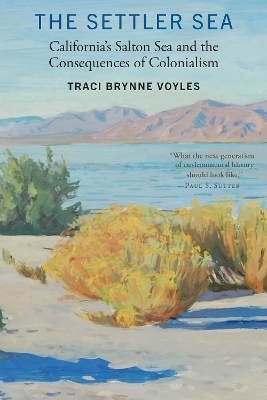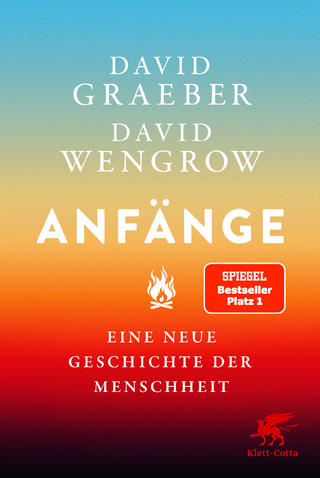
The Settler Sea
California's Salton Sea and the Consequences of Colonialism
Seiten
2022
University of Nebraska Press (Verlag)
978-1-4962-3338-7 (ISBN)
University of Nebraska Press (Verlag)
978-1-4962-3338-7 (ISBN)
The Settler Sea is an environmental history of Southern California’s Salton Sea, the state’s largest inland body of water, and the complex politics of environmental and human health in the West.
2022 WHA Caughey Western History Prize for the most distinguished book on the American West
Can a sea be a settler? What if it is a sea that exists only in the form of incongruous, head-scratching contradictions: a wetland in a desert, a wildlife refuge that poisons birds, a body of water in which fish suffocate? Traci Brynne Voyles’s history of the Salton Sea examines how settler colonialism restructures physical environments in ways that further Indigenous dispossession, racial capitalism, and degradation of the natural world. In other words, The Settler Sea asks how settler colonialism entraps nature to do settlers’ work for them.
The Salton Sea, Southern California’s largest inland body of water, occupies the space between the lush agricultural farmland of the Imperial Valley and the austere desert called “America’s Sahara.” The sea sits near the boundary between the United States and Mexico and lies at the often-contested intersections of the sovereign lands of the Torres Martinez Desert Cahuillas and the state of California. Created in 1905, when overflow from the Colorado River combined with a poorly constructed irrigation system to cause the whole river to flow into the desert, this human-maintained body of water is considered a looming environmental disaster.
The Salton Sea’s very precariousness—existing always in the interstices of human and natural influences, between desert and wetland, between the skyward pull of the sun and the constant inflow of polluted water—is both a symptom and symbol of the larger precariousness of settler relationships to the environment, in the West and beyond. Voyles provides an innovative exploration of the Salton Sea, looking to the ways the sea, its origins, and its role in human life have been vital to the people who call this region home.
2022 WHA Caughey Western History Prize for the most distinguished book on the American West
Can a sea be a settler? What if it is a sea that exists only in the form of incongruous, head-scratching contradictions: a wetland in a desert, a wildlife refuge that poisons birds, a body of water in which fish suffocate? Traci Brynne Voyles’s history of the Salton Sea examines how settler colonialism restructures physical environments in ways that further Indigenous dispossession, racial capitalism, and degradation of the natural world. In other words, The Settler Sea asks how settler colonialism entraps nature to do settlers’ work for them.
The Salton Sea, Southern California’s largest inland body of water, occupies the space between the lush agricultural farmland of the Imperial Valley and the austere desert called “America’s Sahara.” The sea sits near the boundary between the United States and Mexico and lies at the often-contested intersections of the sovereign lands of the Torres Martinez Desert Cahuillas and the state of California. Created in 1905, when overflow from the Colorado River combined with a poorly constructed irrigation system to cause the whole river to flow into the desert, this human-maintained body of water is considered a looming environmental disaster.
The Salton Sea’s very precariousness—existing always in the interstices of human and natural influences, between desert and wetland, between the skyward pull of the sun and the constant inflow of polluted water—is both a symptom and symbol of the larger precariousness of settler relationships to the environment, in the West and beyond. Voyles provides an innovative exploration of the Salton Sea, looking to the ways the sea, its origins, and its role in human life have been vital to the people who call this region home.
Traci Brynne Voyles is an associate professor and chair of women’s and gender studies and the director of the Center for Social Justice at the University of Oklahoma. She is the author of Wastelanding: Legacies of Uranium Mining in Navajo Country.
List of Illustrations
Acknowledgments
A Note on Naming
Introduction: A World on the Brink
Part 1
1. Desert
2. Flood
Part 2
3. Birds
4. Concrete
5. Bodies
Part 3
6. Bombs
7. Chains
8. Toxins
Conclusion: A How-To Guide to Saving the Salton Sea
Notes
Bibliography
Index
| Erscheinungsdatum | 22.07.2022 |
|---|---|
| Reihe/Serie | Many Wests |
| Zusatzinfo | 16 photographs, 5 illustrations, 5 maps, 2 charts, 2 graphs, index |
| Verlagsort | Lincoln |
| Sprache | englisch |
| Maße | 152 x 229 mm |
| Themenwelt | Sachbuch/Ratgeber ► Geschichte / Politik ► Allgemeines / Lexika |
| Sachbuch/Ratgeber ► Geschichte / Politik ► Regional- / Landesgeschichte | |
| Sachbuch/Ratgeber ► Natur / Technik ► Natur / Ökologie | |
| Geisteswissenschaften ► Geschichte ► Regional- / Ländergeschichte | |
| ISBN-10 | 1-4962-3338-7 / 1496233387 |
| ISBN-13 | 978-1-4962-3338-7 / 9781496233387 |
| Zustand | Neuware |
| Haben Sie eine Frage zum Produkt? |
Mehr entdecken
aus dem Bereich
aus dem Bereich
die Reise der Menschheit : zwischen Aufbruch und Scheitern
Buch | Softcover (2023)
Ullstein Taschenbuch Verlag
14,99 €


